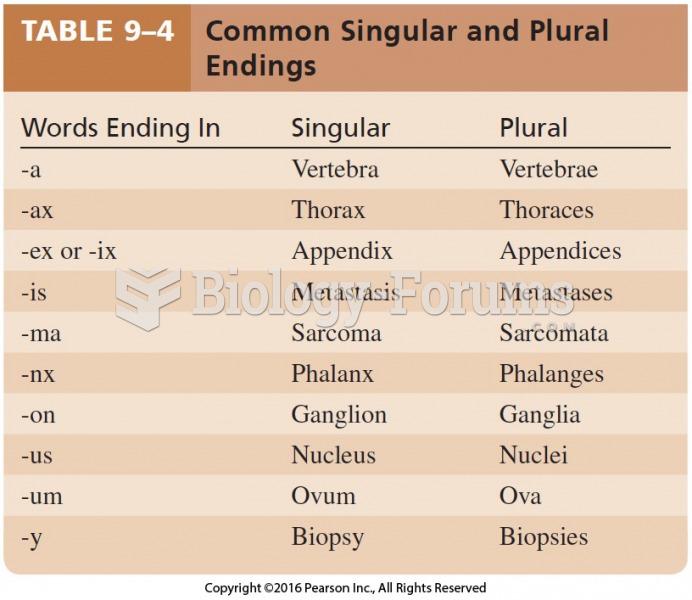|
|
|
Elderly adults are at greatest risk of stroke and myocardial infarction and have the most to gain from prophylaxis. Patients ages 60 to 80 years with blood pressures above 160/90 mm Hg should benefit from antihypertensive treatment.
The cure for trichomoniasis is easy as long as the patient does not drink alcoholic beverages for 24 hours. Just a single dose of medication is needed to rid the body of the disease. However, without proper precautions, an individual may contract the disease repeatedly. In fact, most people develop trichomoniasis again within three months of their last treatment.
Multiple sclerosis is a condition wherein the body's nervous system is weakened by an autoimmune reaction that attacks the myelin sheaths of neurons.
The immune system needs 9.5 hours of sleep in total darkness to recharge completely.
Each year in the United States, there are approximately six million pregnancies. This means that at any one time, about 4% of women in the United States are pregnant.
 The Pleiades, an open cluster of stars in the constellation of Taurus. These stars share a common mo
The Pleiades, an open cluster of stars in the constellation of Taurus. These stars share a common mo
 Circular palmar petrissage back up the spine from buttocks to shoulders. Tissues lift as hands trace ...
Circular palmar petrissage back up the spine from buttocks to shoulders. Tissues lift as hands trace ...





